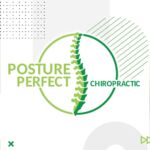
Muscle atrophy—the gradual loss or wasting of muscle tissue—is more common than you might think. It often develops due to aging, injury, illness, or a period of inactivity. According to Mount Sinai, it can also occur when a person is bedridden or unable to move a part of their body for an extended time.
Studies estimate that up to one-third of muscle strength can be lost within two weeks of immobility, especially in older adults. Left unmanaged, this decline can lead to significant challenges in daily life, including reduced mobility, poor posture, joint instability, and a higher risk of falls.
That’s where chiropractic therapy comes in. While it’s commonly known for spinal adjustments, chiropractic care also plays a key role in supporting muscle recovery, promoting movement, and improving overall physical strength—naturally and effectively.
Understanding muscle atrophy
Muscle atrophy is what happens when your muscles start to shrink or weaken from lack of use or underlying health issues. It’s not just about losing strength—atrophy can affect how you move, how stable you feel, and even how confident you are in your body.
There are two main types:
- Disuse atrophy – This is the most common and happens when you don’t move a muscle group enough. Think long periods of bed rest, wearing a cast, or even just living a very inactive lifestyle.
- Neurogenic atrophy – This one’s more serious. It’s caused by damage to the nerves that connect to your muscles, often linked to conditions like stroke, ALS, or spinal cord injuries.
Over time, if left untreated, muscle atrophy can affect your posture, disrupt your balance, and make everyday activities more difficult. It may also increase your risk of falls, joint pain, and long-term mobility issues.
Common Signs and Symptoms to Look Out For
Muscle atrophy can sneak up slowly or happen more suddenly, depending on the cause. Here are some symptoms people commonly notice:
- One limb or muscle group appears smaller or weaker than the other.
- Feeling fatigued during normal physical activities.
- Reduced flexibility or range of motion, especially after periods of rest.
- A sense that your muscles feel soft, deflated, or less firm.
- Occasional pain or discomfort, especially when trying to use weakened muscles.
If you’re finding everyday movements more difficult, it may be time to assess muscle health.
What Causes Muscles to Waste Away?
Several factors can lead to muscle atrophy, including:
- Prolonged inactivity – from bed rest, immobility, or a sedentary lifestyle
- Aging – as we grow older, we naturally lose muscle mass if we don’t stay active
- Nutritional deficiencies, particularly low protein intake
- Chronic illnesses – such as cancer, COPD, or arthritis that reduce activity levels
- Neurological disorders – like multiple sclerosis, stroke, or spinal cord injuries
- Injuries that keep you from moving certain areas of the body
Whatever the cause, muscle atrophy often worsens over time if not addressed early.
Chiropractic Therapy as a Potential Solution
Chiropractic care involves more than spinal adjustments. It supports the body’s natural ability to heal, helps muscles regain function, and promotes long-term physical wellness.
Restoring Nerve Function Through Spinal Alignment
Chiropractic can correct subluxations, and misalignments in the spine that may interfere with nerve function. When these are corrected, the nervous system can operate more efficiently—helping muscles receive the proper signals needed to activate and function normally. Improved nerve communication allows the body to better regulate muscle tone, strengthen coordination, and support the rebuilding of weakened muscles.
Reducing Pain and Making Movement Easier
Chiropractic care can deliver pain relief, especially for individuals experiencing limited mobility due to muscle atrophy. When pain is reduced and mobility improves, patients are more likely to return to physical activity, which is a vital part of muscle recovery.
When exercise becomes more manageable, it creates opportunities to safely rebuild strength and slow the progression of muscle atrophy.
Supporting Recovery with Nutritional Guidance
Muscle health isn’t just about movement—it’s also about what you eat. Chiropractors may offer nutritional guidance, recommending anti-inflammatory foods that support healing, such as leafy greens, berries, and omega-3-rich options. They may also advise avoiding processed foods, added sugars, and ingredients that increase inflammation.
Chiropractic Therapies for Muscle Atrophy
In chiropractic practice, recovery often includes more than just spinal care. Many chiropractors incorporate supportive therapies that help target tight or underused muscles, making it easier for the body to recover and regain balance. Here are some commonly used techniques:
- Soft tissue massage – This technique involves applying pressure to muscles, ligaments, and tendons to help release tightness and improve circulation. When muscles are more relaxed, flexibility improves and the body becomes better prepared for movement-based therapies and gentle strengthening exercises.
- Trigger point therapy – Trigger points are small, tender knots in the muscle that can cause pain and limit motion. Applying direct pressure to these areas helps release tension, ease discomfort, and restore normal muscle function.
- Myofascial release – This hands-on technique targets the fascia, the thin layer of connective tissue that surrounds the muscles. Releasing restrictions in the fascia can improve movement, reduce stiffness, and support the body’s natural healing process.
- Therapeutic ultrasound – This treatment uses sound waves to send gentle vibrations deep into the muscle tissue. Increased blood flow and improved tissue repair make it an effective option for managing inflammation and promoting recovery in atrophied muscles.
When combined with chiropractic adjustments and personalized exercises, these therapies offer a well-rounded approach to managing muscle atrophy. They help restore strength, improve mobility, and support long-term healing.
Let’s Work on Getting Your Strength Back
Muscle atrophy doesn’t have to define how you move or feel. With the right combination of chiropractic care, targeted therapies, and guided exercises, your body can begin to regain strength, restore balance, and return to a more active, confident life.At Posture Perfect Chiropractic, we take a personalized and holistic approach to your recovery. Whether you’re dealing with long-term muscle loss or just starting to notice signs of weakness, our team is here to support you every step of the way. Book an appointment today and let’s start building a plan that works for you.
Frequently Asked Questions
Chiropractic adjustments help realign the spine, which can relieve tension in surrounding muscles. This improved alignment allows muscles to function more efficiently and may reduce tightness or discomfort.
Feeling slightly weak or tired after an adjustment is common. It’s often a sign that your body is adjusting to improved alignment and releasing built-up tension. This feeling typically fades within a day or two.
Yes, chiropractors can help loosen tight muscles through spinal adjustments and other therapies like soft tissue work or stretching techniques. These treatments reduce tension and support better muscle function.





